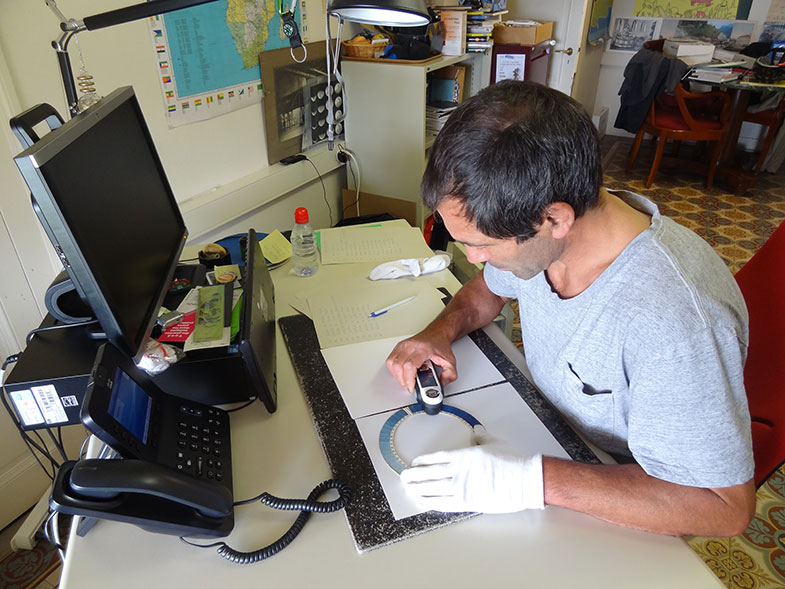In 1787, Horace Benedict de Saussure dyed paper squares every shade of blue he could distinguish between white and black using suspensions of Prussian blue. The scale of the resulting 52 different blues were assembled into a numbered colour wheel (cyanometer) that could be held up to the zenith at a standard distance from the eye: the matching of a square to the colour of the sky established the degree of blue. Later explained by the mathematics of light scattering, the original measurement of blueness/light by Saussure still rings true to our emotional relationship to the sky and the weather.
The original Saussure cyanometer is in the collection of the Musée d'histoire des sciences de Genèves, Switzerland. For the 2014 Urban Light Ruhr, with the assistance of the museum, we recorded the exact Pantone value of each of the original 52 hues, and faithfully reproduced them in dry colour pigments. Each hour, for twelve hours, throughout the duration of the festival, we followed Saussure's rigorous but ultimately futile attempt to precisely capture and reproduce the blueness of the sky.
Using specially designed software, the blueness of the sky was measured. Once identified, the matching dry colour pigment was loaded in a customised projectile, then fired with a high-power air cannon against the wall of a WW2 bunker, in the heart of the city of Hamm, Germany. The projectiles were carefully designed to produce a cloud of smoke and leave a clear mark on the wall, creating a spectacle and celebration of the light and colour at that moment, and a lasting record of the colour of the sky throughout the day.
Technical team: Lowell Smith
Urbane Künste Ruhr
Musée d'histoire des sciences de Genève, Switzerland





